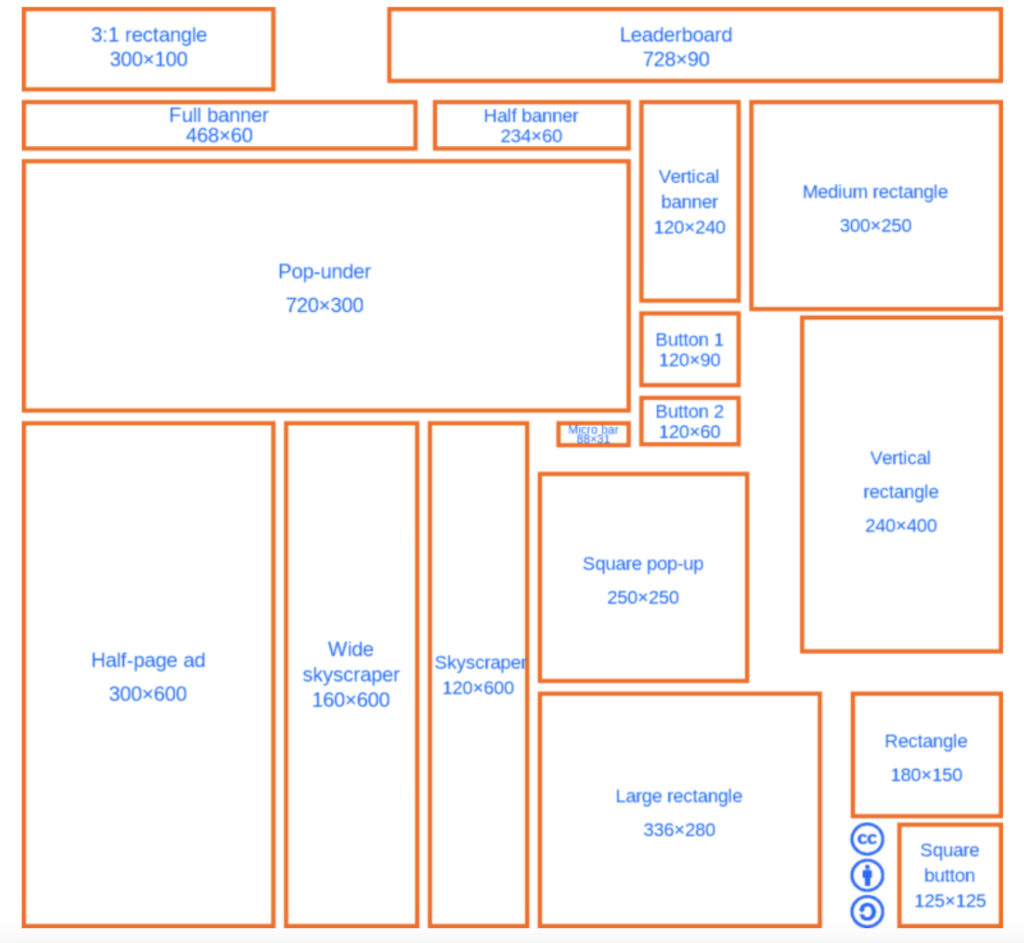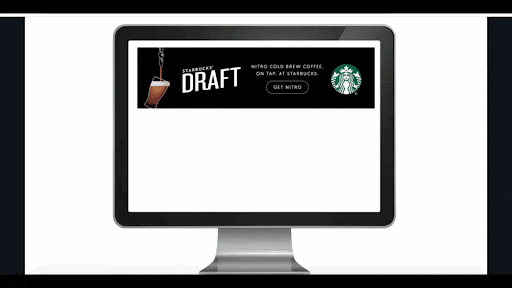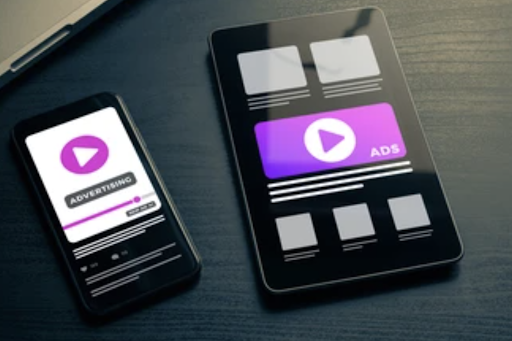Where Are the Best Placements For Banner Ads?
Banner ads are a popular form of online advertising that can be found on websites all over the internet. These ads are typically rectangular in shape and come in a variety of sizes.
An important thing to consider when thinking about how best to optimize advertising on your website is the best placements for banner ads. Where you place, how you position banner ads and the content of those banner ads can have a big impact on how many people look at your ads and click on them. You have to put yourself in the position of the user of the traffic you are targeting. To increase your CTR (Click-Through Rates), it is important to consider these suggestions.
The first thing one must consider is ad placement and positioning. Where you place the ads is crucial to engaging users and achieving higher CTRs. Ads that are placed close to content tend to be more successful than ads that are placed farther away from the content of the page, especially on the periphery. Heat maps of websites are good evidence of this. Ads that are placed above the fold are usually much more successful than those that are placed below the fold. Essentially, what is initially viewable when the page loads without having to scroll down gets a lot more of the user’s attention.
You must also think about the number of ads on your website. Now, this is an avenue where you can go seriously overboard. A website with too many ads is off-putting for users and potential advertisers. Not many users will be interested in low-content websites and find a large number of ads distracting. Also, advertisers may not like competing with many other ads.
Another thing that’s important is to know your user, and know what target you want to traffic. This is where doing research is vital. Decide who exactly you want to target and research that demographic. Advertising what suits their lifestyle; basically, what ads would interest them is an important way to optimize your banner ads.
Ads that are animated can be useful for grabbing a user’s attention; however, it is important not to go crazy. Animated ads with automatic sound can come off as startling and irritating. If an ad does have sound, it is best to make it optional as to not alienate potential customers. You don’t want your website to be considered the website with annoying ads. Also, a powerful heading for your banner ads can be a useful way of grabbing a user’s attention and encouraging them to revisit your website. Also, interesting illustrations can grab a user’s attention, and an incentive for more information can make the user want to explore the offer further.
It is also important to consider the size of your banner ads. Let’s take a closer look at the most common banner ad sizes and how they can be used to effectively promote a business or product.

Leaderboard
The leaderboard banner ad is one of the most popular and widely used sizes. It measures 728 pixels wide by 90 pixels tall and is often placed at the top of a website, above the main content. This makes it one of the most noticeable and visible ad positions on a website. Leaderboard ads are perfect for promoting a brand or product and can be used in many ways, such as linking to a landing page or promoting a sale.
Medium Rectangle
The medium rectangle banner ad is another popular size, measuring 300 pixels wide by 250 pixels tall. It’s a popular ad size for publishers, being a versatile and well-established size that can be easily integrated into a wide variety of webpage layouts. Additionally, the Medium Rectangle is a standard ad size that is recognized by most advertisers, making it easy for publishers to fill ad inventory with this size. Furthermore, it’s a size that is large enough to display a clear message and call to action but not so large that it takes up too much space on the page, making it less intrusive for users.
Skyscraper
The skyscraper banner ad comes in the tall ad stack category, measuring 160 pixels wide by 600 pixels tall. It is also known as the “120×600” or “160×600” ad. The size is tall, which can allow publishers to show more information about the advertised product or service and include more images or videos. Furthermore, the Skyscraper size is less intrusive for users than larger ad sizes, as it takes up less horizontal space on the page.
Full Banner
The Full Banner ad (also known as a “468×60” ad) is a popular ad size for publishers because it is a classic and well-established size that can be easily integrated into a wide variety of webpage layouts. The size is large enough to be easily seen by visitors and it can be placed in a variety of locations on a website, such as at the top or bottom of a page. However, its size can also be considered as intrusive and may cause users to scroll past it. In terms of conversion rates, the effectiveness of the Full Banner ad will depend on factors such as the targeting and design of the ad, as well as the context in which it is placed on the webpage.
Button
The button banner ad (also known as a “125×125” ad) is a smaller ad size that is typically used for display in the sidebars or other small spaces on a webpage. This size can be an effective option for publishers looking to maximize ad space by fitting into smaller spaces, or for publishers looking to increase the number of ads on a page. The smaller size of the button banner ad can also make it less effective for attracting attention and driving conversions than larger ad sizes. Additionally, the button banner ad size can be considered too small to show detailed information about the advertised product or service and may be less effective for advertisers to communicate their message.
Square
The square banner ad (also known as a “250×250” ad) is a square-shaped ad size that can be easily integrated into a wide variety of webpage layouts. The square shape can be used to showcase images and videos, which can be more engaging for users than text-based ads. The square banner can be a good option for publishers looking to stand out and capture users’ attention by using a non-traditional shape, it can be used to showcase images and videos, but it can also be considered too small to show detailed information about the advertised product or service.
Wide Skyscraper

A wide skyscraper banner ad usually 300×600 pixels in size is a popular size for web ads. The ad size is bigger than a standard skyscraper (160×600 pixels) and smaller than a leaderboard (728×90 pixels). The wide format of a wide skyscraper banner allows for more space to include text, images, and other elements. This allows for more creative and effective ways of showcasing the product or service. Additionally, this ad size is less intrusive than a full-page ad and can be placed in a position that is less likely to block the main content of the website. Therefore, it’s a good balance between visibility and user experience.
Large Rectangle
The large rectangle banner ad is a large size, measuring 336 pixels wide by 280 pixels tall. This ad size is considered to be one of the most effective and widely used ad sizes due to its large size and prominence on a webpage. The large rectangle banner is considered a good ad size in the ad stack because it is big enough to catch the attention of website visitors and provide ample space for ad content, but not so big that it becomes intrusive or overwhelming.
Half Page Ad
A half page ad banner, also known as the “IAB Half Page” size, is a standard ad size that measures 300×600 pixels. This ad size is considered to be a good option for publishers as it provides a large canvas for displaying ads, while still being smaller than a full-page ad. This ad size is considered to be highly effective for driving engagement and conversions, as it provides ample space for ad content, such as images, text, and videos, which makes it ideal for storytelling, promoting products or services, and creating a connection with the audience.
Another advantage of the half page ad banner size is that it is highly versatile. It can be used in a variety of ad formats such as static image, animated gif, HTML5, and video. It is compatible with most ad networks and platforms, making it easy to incorporate into advertising campaigns. This big ad banner is more cost-effective than full-page ads, as it allows advertisers to reach many users with a single ad placement while not taking up as much space.
Mobile Leaderboard
With an increasing number of users accessing the internet on their mobile devices, it’s important to consider mobile-specific banner ad sizes. The mobile leaderboard is a popular size, measuring 320 pixels wide by 50 pixels tall. Mobile leaderboard banner ads are a standard ad size designed specifically for mobile devices.
This ad size is considered to be one of the most effective and widely used ad sizes for mobile devices due to its prominence on a small screen. Since it is big enough to catch the attention of mobile users providing ample space for ad content but not that intrusive, many app developers love implementing it.
Interstitial

An interstitial banner ad is a full-screen ad that appears between content on a website, typically between pages. They are designed to be highly visible and attention-grabbing and are often used to promote apps or other products or services. They are generally shown in between content pages or sections and usually take up the full screen of a mobile device or website.
Video Ads

In addition to traditional banner ads, many websites also offer the option to display video ads. For publishers looking to maximize ad revenue, video ads can be a great option to consider.
Video ads are considered to be highly effective for driving engagement and conversions, as they allow advertisers to tell a story, convey emotion, and create a connection with the audience. They also tend to have higher click-through rates and conversion rates than other types of ads. Additionally, video ads offer a better user experience as it provides more interactive content, and it’s more likely to be shared and go viral.
Choosing the Right Banner Ad Size
When it comes to choosing the right banner ad size, it’s important to consider the placement of the ad on the website, as well as the overall design and message of the ad. For example, a leaderboard ad may be the perfect option for a business looking to make a big impact, while a button ad may be a better choice for a business looking to promote its products or services more subtly.
Conclusion
In conclusion, banner ads come in a variety of sizes and can be used to promote a business or product effectively. By understanding the most common banner ad sizes and how they can be used, businesses can make informed decisions regarding their online advertising strategy. By using the right size and placement for their ads, businesses can increase their visibility and reach their target audience more effectively.
FAQ
What is the standard size for a web banner ad?
The standard size for a web banner ad is 728 pixels wide by 90 pixels tall, also known as a leaderboard ad. This size is commonly used at the top of websites and is considered a standard size for online advertising.
Are there specific sizes for mobile banner ads?
Yes, there are specific sizes for mobile banner ads. These sizes are typically smaller than standard web banner ad sizes and are designed to fit the smaller screens of mobile devices. The mobile leaderboard ad is a popular size, measuring 320 pixels wide by 50 pixels tall.
Can I create custom banner ad sizes?
Yes, custom banner ad sizes can be created to fit the specific needs of your business or campaign. However, it's important to keep in mind that custom sizes may not be supported by all websites or ad networks, so it's a good idea to check compatibility before creating a custom size. Additionally, it's important to consider the placement of the ad on the website, as well as the overall design and message of the ad when deciding on the size.
What are the most common banner ad sizes in 2023?
The most common banner ad sizes in 2023 include the leaderboard (728 x 90 pixels), medium rectangle (300 x 250 pixels), skyscraper (120 x 600 pixels), and full banner (468 x 60 pixels). These sizes are widely supported by ad networks and websites and are considered standard sizes for online advertising.
Are there any new banner ad sizes that have emerged in 2023?
In 2023, there are new ad sizes that are becoming more common, such as the mobile leaderboard (320 x 50 pixels) and interstitial (full-screen) ads. These sizes are specifically designed for mobile and tablet devices which are becoming increasingly popular.
Are there any specific sizes for video banner ads?
Video banner ads come in different sizes, it's common to find sizes like 16:9 (1280x720 pixels) and 4:3 (640x480 pixels) but it also can be customized to fit a specific size, as long as the website or ad network allows it. Video banner ads are a great way for businesses to showcase their products or services in an engaging way and are becoming increasingly popular in 2023.
source https://www.monetizemore.com/blog/most-common-banner-ads-sizes/


0 Comments